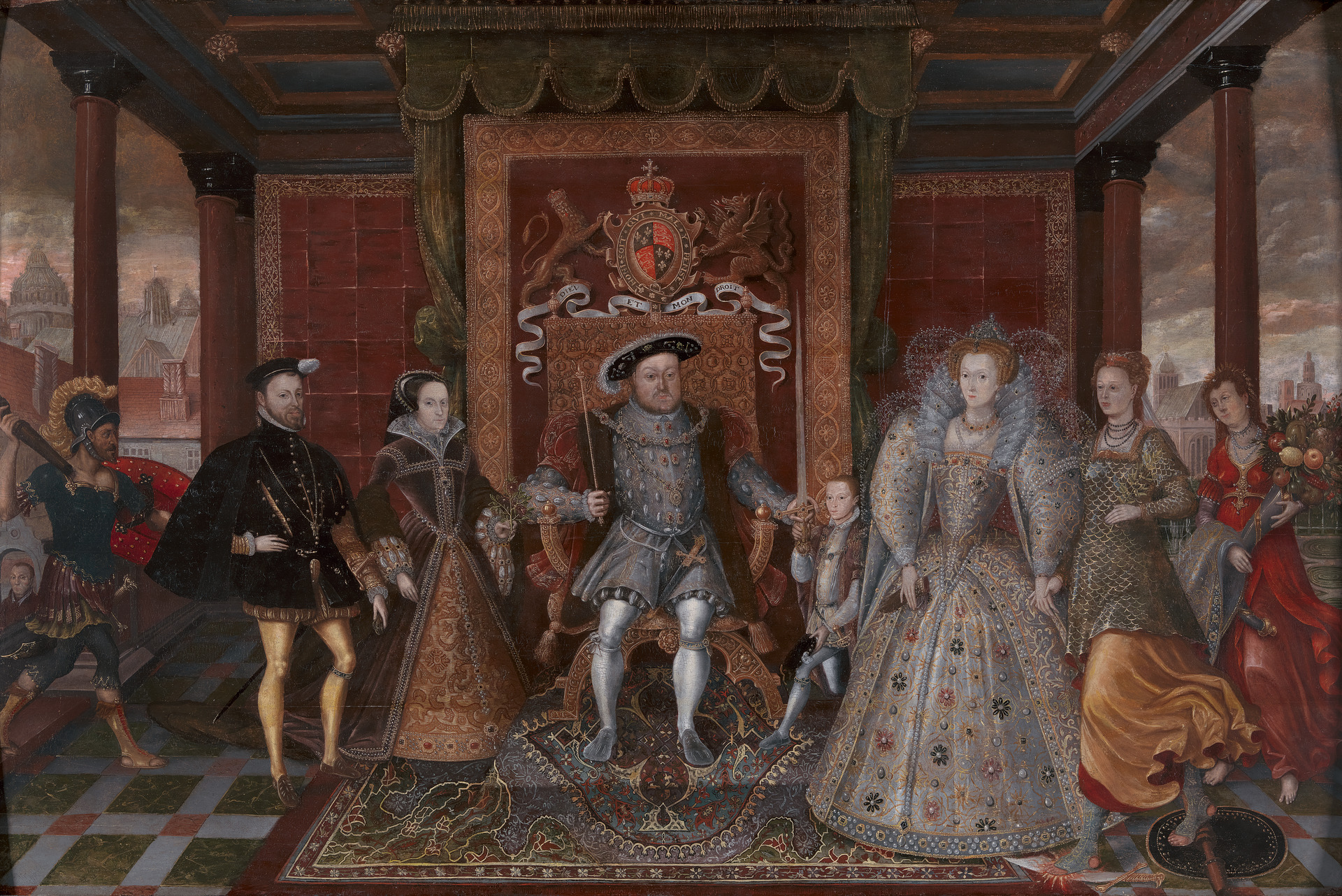Object of the Week
April 21, 2020
Our current circumstances have required some families to spend more time together than ever. Being present for loved ones is often considered to be an ideal to strive toward, and one might assume that’s the subject of this Tudor piece. But there’s more to this than meets the eye. Though the painting pictured here appears to depict the family of Henry VIII gathered together, it is not a simple presentation of a happy moment.
By the suggested date that this painting was completed, the only Tudor still alive was Elizabeth I. In fact, it is impossible for these figures to have ever stood together at the ages they’re depicted here. Instead, the artist, engaging in a sixteenth-century version of Photoshop, used known portraits of Henry VIII, Edward VI, Mary I, and Philip of Spain, painted during their lifetimes, to bring them into a fantastical scene with Queen Elizabeth.

Unknown artist, An Allegory of the Tudor Succession: The Family of Henry VIII, ca. 1590
The commissioner’s objective was not to create a happy family portrait—it appears instead, to offer commentary about the Tudor succession, and particularly the benefit to the kingdom of the Protestant succession. Henry VIII turns to the viewer’s right, toward Edward VI and Elizabeth I—the heirs that furthered the establishment of Protestantism as the state religion. The gains of this are shown by presenting the goddesses of Peace and Plenty accompanying Queen Elizabeth into the space. On the left side, Mars, the God of War, accompanies Elizabeth’s Catholic sister Mary I and her husband, Philip of Spain, linking them inextricably with the idea of war and disruption. Which of the Tudors, and which religious settlement, is the viewer invited to conclude brought the greatest good to the kingdom?
Written by Lisa Ford, Senior Manager of Special Projects for the Director, Yale Center for British Art
Watch Ford discuss this painting in greater detail here.